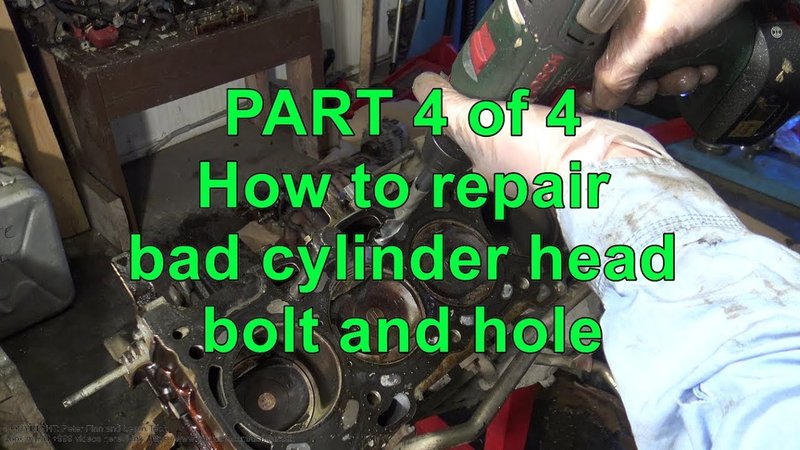
Here’s the thing: When you turn that key or thumb turn and the lock wiggles, it usually means something’s come loose, worn out, or wasn’t installed quite right. Whether you’ve got a classic Schlage, a Yale, or one of the brand-new smart deadbolt locks, nobody wants to stand at their front door wrestling with a wobbly lock. As someone who’s had to fix this more than once—usually after a late-night grocery run—let me break down what’s going on, why it matters, and how you can fix it without calling in a pro (or having a panic attack).
Why Does My Deadbolt Feel Loose in the Cylinder Hole?
Let’s start simple: when a deadbolt feels loose in the cylinder hole, it almost always comes down to one of a few root problems. The “cylinder hole” is just the part of your door where the main lock body sits. If there’s wiggle room, something’s not lining up or holding together the way it should.
Here’s what’s usually causing that loose feeling:
- Loose set screws or mounting bolts: These are the fasteners that hold the deadbolt lock body together.
- Worn-out or stripped holes: If the screws keep turning but never get tight, the wooden door might be stripped out.
- Misaligned parts: Sometimes, the lock wasn’t installed straight to begin with, or the door/swelling has made it worse.
- Cheap or old parts: Older deadbolts, especially no-name brands, are more likely to loosen up over time.
You might notice the whole lock moves when you turn the key, or maybe just the cylinder itself spins slightly. It’s not just annoying—it can stop your lock from lining up with the strike plate, making it tough to lock or unlock your door. If you’ve got a “universal” deadbolt designed to fit several brands, they sometimes don’t fit as snugly as OEM (original equipment manufacturer) models either.
Key Parts of a Deadbolt Lock and How They Can Get Loose
Deadbolts might seem simple from the outside, but they’re made up of several parts that have to work together. Understanding where things go wrong can make troubleshooting way less stressful.
Inside a typical deadbolt, you’ll find:
- The cylinder: Where you insert your key (or punch in your code if it’s a smart lock).
- The bolt: That’s the “dead” part that slides into your doorframe to keep things secure.
- The housing or case: The metal body sitting in the cylinder hole.
- Mounting screws or bolts: These go through your door, connecting the inside and outside halves of the lock.
If the mounting screws inside the lock body loosen even a bit, the entire cylinder can start to move around—or worse, you might be able to spin the outside portion with the key, but nothing happens inside. This is common with older locks or if your last installation wasn’t super tight. Over time, even strong screws can loosen if you regularly slam the door or if the door swells and shrinks from changes in weather.
It’s also not uncommon for wood doors to develop stripped screw holes—especially if a previous set of screws wasn’t quite long enough. With smart deadbolts and remotes (like those from August or Schlage Encode), a poor fit can also mess with the lock’s ability to sync, pair, or reset properly, since the electronics need everything lined up.
Checking for Loose Screws, Stripped Holes, and Misalignment
The first step in fixing a wobbly deadbolt is a good old inspection. Grab a flashlight and a screwdriver; you don’t need to be MacGyver.
Start by opening the door so you can see the edge where the bolt comes out. Gently grab the cylinder (that’s the round part where your key goes) and see if you can move it. If you feel movement, that’s your first sign something is off.
Now, look at these areas:
- Mounting screws: Are the screws on the inside lock plate tight? If they’re loose, the whole lock will shift.
- Strike plate alignment: Is the bolt lining up cleanly with the hole in the frame? If it’s off, realigning the lock is key.
- Cylinder fit: Is the cylinder snug in the door? If it’s not, the hole might be too wide, or the lock might not be seated right.
If screws spin but never get tight, the screw holes in the wood are probably stripped. For metal doors, a loose fit usually means the deadbolt body isn’t sized right or the inner plate is loose. Check for cracks or broken parts, too—sometimes old locks develop hairline fractures that only show when you put pressure on them.
How to Tighten a Loose Deadbolt: Step-by-Step
Let me explain the process like you’re fixing it with me. Here’s a step-by-step fix for a deadbolt that feels loose in the cylinder hole.
- Remove the lock: Unscrew the interior mounting screws. These are usually on the inside faceplate. Set everything aside carefully.
- Inspect the screw holes: Check if they’re stripped or worn out. If the wood is damaged, you might need to fill it with wood filler or use longer screws.
- Check cylinder fit: The cylinder should sit snugly in the door. If not, you might need to wrap it with thin tape or use a deadbolt with a wider case.
- Reinstall and tighten everything: Put the deadbolt back in, tighten the screws evenly, and make sure there’s no wobble. You want it “hand-tight” but don’t go so hard you strip the holes again.
- Test the lock: Turn the key or thumbturn a few times. If it’s still loose, double-check your screw holes and the cylinder fit.
If you’ve got a smart deadbolt with code, sync, or remote functions, make sure you don’t pinch any wires and that everything lines up. Sometimes, a loose mechanical fit can even cause syncing issues or prevent a reset if the electronics can’t sense the bolt moving correctly.
Fixing Stripped Screw Holes in Wooden Doors
Here’s where things get a little more hands-on. If your screws just spin and never grab, don’t panic—a stripped screw hole is common, but fixable.
You can do this:
- Fill with wood filler or toothpicks: Pack the hole with wood glue and wooden toothpicks until it’s snug, then snap off the excess. Let it dry, then reinstall the screw.
- Use longer or thicker screws: Sometimes a screw that’s half an inch longer will reach fresh wood and hold tight.
- Try a screw anchor: Plastic wall anchors or specialty wood anchors can help the screws bite better.
Once fixed, reinstall the deadbolt and give it a workout—lock and unlock it a few dozen times to make sure it stays tight. Don’t forget, even the best repair can loosen up over years, especially with heavy use or dramatic temperature swings.
Sometimes, a “quick fix” like just tightening the screws can buy you time, but if you notice the lock loosening again within weeks, a full repair—including new holes or a better-fitting deadbolt—might be the only real fix.
When to Replace Your Deadbolt (And How to Choose the Right One)
Honestly, there’s a point where even the best DIY fix won’t cut it. If your deadbolt is old, corroded, or just can’t get tight no matter what you try, it’s probably time to replace it.
Here are some signs it’s time for a new lock:
- The lock body is cracked or the inner parts rattle when you shake it.
- The cylinder or bolt won’t stay tight even after repairs.
- The door itself is damaged beyond a simple fill-and-drill fix.
If you’re shopping for a new deadbolt, you’ll see two main types: universal (meant to fit many doors) and brand-specific (for names like Schlage, Kwikset, or Yale). Universal deadbolts are handy if you’re in a rush or dealing with an odd-sized door, but honestly, brand-specific models usually fit better and feel more solid over the long haul.
For those using smart locks with remote, sync, reset, or code features, make sure your new deadbolt lines up with your existing hardware and door thickness. Some smart models have special mounting plates or extra wiring that need an extra-tight fit in the cylinder hole.
Tips for Keeping Your Deadbolt Secure and Snug Over Time
Once you’ve tightened or replaced your deadbolt, a little maintenance goes a long way. Here’s what helps:
- Check the screws every few months—just a quick tighten can prevent future wobbles.
- Lubricate the lock with graphite or a lock-specific lubricant (never WD-40, it gums up the works).
- Don’t slam your door. It seems harmless, but hard impacts can loosen both the deadbolt and the strike plate over time.
- If you have smart features, check batteries and connections so everything keeps syncing smoothly.
If you’re using a remote, code, or app-based lock, keep the firmware up-to-date. Sometimes, a little software update can fix sync or pairing bugs that show up when the physical lock is loose or out of alignment.
Common Deadbolt Troubleshooting Mistakes to Avoid
You might be tempted to just crank the screws down as hard as you can, but that’s a quick way to strip out the holes—especially on wood doors. Another common mistake: tossing in a pile of wood glue or filler and expecting it to last forever without giving it time to cure. You need patience and the right materials for a repair that actually lasts.
Here’s what not to do:
- Don’t use temporary fixes like duct tape or glue alone—they might hold for a day, but won’t keep you secure.
- Avoid over-tightening; always go for snug, not “white-knuckle.”
- Don’t ignore alignment issues; if the bolt isn’t lining up with the strike plate, the lock will loosen again fast.
- Never force the key or thumbturn; forcing can bend parts or break the cylinder entirely.
Honestly, most lock problems are way simpler to fix—and less expensive—if you catch them early. If you’re ever in doubt, take the lock apart, look at each piece, and compare it to online diagrams or manufacturer instructions.
Wrapping Up: Ensuring a Solid and Secure Deadbolt Fit
A deadbolt that feels loose in the cylinder hole can sneak up on you, but it’s usually fixable with a little time and the right know-how. The bottom line: your lock should feel rock-solid every single time you use it. If it doesn’t, take a breath, grab your screwdriver, and start troubleshooting—whether it’s tightening screws, filling holes, or picking out a fresh deadbolt that actually fits your door.
In the end, a secure deadbolt isn’t just about peace of mind—it’s about knowing your home is as safe as it should be. So don’t ignore that little wobble. Getting it fixed today means you’ll sleep easier tonight, knowing your lock (and your home) is truly secure.
